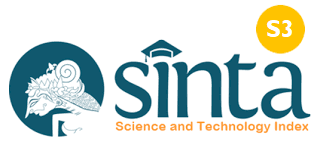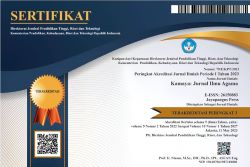Dinamika Perkembangan ISHARI dan Implementasi Nilainya dalam Pembelajaran
DOI:
https://doi.org/10.37329/kamaya.v7i1.3055Keywords:
Local Art, ISHARI, Merdeka Curriculum, History Learning, ValuesAbstract
Local history including the art of hadrah ISHARI is increasingly forgotten by the community, especially students in the era of globalization. The art of hadrah ISHARI has its roots in the Islamic tradition of commemorating the birthday of the Prophet Muhammad. ISHARI faces the threat of existence due to shifting community preferences towards modern art. This situation reflects a lack of appreciation for values that are increasingly displaced by globalization and instant trends. This research uses a qualitative method that focuses on the implementation of ISHARI'S development dynamics and values in history learning, according to the independent curriculum. The data in this study were obtained through observation, interviews, and documentation. The main resource person is the chairman of the Jombang branch of ISHARI. This research highlights the urgency of understanding and preserving local values such as ISHARI in the context of education. With an interesting learning approach for the younger generation, it is expected to increase appreciation for local history and arts. The implementation of ISHARI values in the independent curriculum is expected to form positive characters in students and increase their understanding of local cultural heritage. The results of this study contribute to increasing public awareness, especially among students, of the importance of preserving local history and arts. The implementation of ISHARI values in the independent curriculum is a strategic step to maintain and pass on values to the younger generation.
References
Akromusyuhada, A. (2018). Seni dalam Perspektif Al Quran dan Hadist. Jurnal Tahdzibi, 3(1), 1–6.
Almarisi, A. (2023). Kelebihan dan kekurangan kurikulum merdeka pada pembelajaran sejarah dalam perspektif historis. Mukadimah : Jurnal Pendidikan Sejarah, dan Ilmu-Ilmu Sosial, 7(1), 111–117.
Amrazi Zakso. (2022). Implementasi Kurikulum Merdeka Belajar di Sekolah Penggerak. Jurnal Pendidikan Sosiologi Dan Humaniora, 13(2), 916–922.
Anwari, K., Setiadi G. (2023). Dakwah Komunikasi Visual Ishari NU Milenial Siswa SMP, SMA, dan SMK Sunan Kalijogo Jabung. Al-Ittishol: Jurnal Komunikasi Dan Penyiaran, 4(1), 69–81.
Asy’ari, M. (2017). Islam dan Seni. Jurnal Hunafa, 4(2), 169–174.
Fikri, S. (2014). Seni Musik Dalam Perspektif Islam. Studi Multidisipliner, 1(2), 1–25.
Kemendikbudristek. (2021). Kurikulum Untuk Pemulihan Pembelajaran. Kemendikbudristek.
Kemendikbudristek. (2022). Dimensi, Elemen, dan Subelemen Profil Pelajar Pancasila pada Kurikulum Merdeka. Kemendikbudristek.
Khoiroh, H., Aldiansyah, M., Alfa, M., & Murtadho, C,. (2023). The Phenomenon of Cultural Spirituality : Impact of ISHARI Youth Participation and Their Role in the Community in Rungkut Kidul. Iconities(International Conferences on Islamic Civilization and Humanities), Faculty of Adab and Humanities, UIN Sunan Ampel Surabaya, Indonesia, 264–288.
Larashati, B. W., Yanuartuti, S., & Lodra, I. N. (2021). Hadrah Ishari Art: Ethnomusicological Study At Sirojul Huda Islamic Boarding School In Purwosari Pasuruan Regency. Jurnal Seni Musik, 10(2), 101–108.
Mukhlason, M. (2015). Pengembangan Kurikulum Muatan Lokal Seni Hadrah Pasuruan. Jurnal Studi Islam, 10(2), 128-142
Munawaroh, M., Suroso, S., & Farid, M. (2019). Pengaruh Tari Rodad Hadrah Terhadap Religiositas Remaja. Jurnal Intervensi Psikologi (JIP), 11(1), 25–42.
Nuruddin, M. (2012). Seni atau Ibadah, Sebuah Tirani yang Menyingkap Tirani Kejumudan Tradisi Dalam Bingkai Religi. Pasuruan: PC ISHARI Kab. Pasuruan.
Nuruddin, M. (2015). Al ’Iqdu Durori Fi Tarjamati Sholawati ’ala Nabi Il ISHARI. Surabaya: Pimpinan wilayah ISHARI Jawa Timur.
Nyia Abdullah, M. I., Abu Bakar, S., & Mohd Annuar, D. T. (2013). Rodat: Budaya tradisi yang berevolusi. Wacana Sen Journal of Arts Discourse, 12, 19–56.
Prastowo, A. (2012). Metode Penelitian Kualitatif Dalam Perspektif Rancangan Penelitian. Yogayakarta: Ar-ruzzmedia.
Rahayu, R., Rosita, R., Rahayuningsih, Y. S., Hernawan, A. H., & Prihantini. (2022). Implementasi Kurikulum Merdeka Belajar di Sekolah Penggerak. Jurnal Basicedu, 6(4), 6313–6319.
Samsinar., Andi Tahir., & Cahayanati, E., (2023). Guru Penggerak Dalam Kurikulum Merdeka Belajar. Tulungagung: Akademia Pustaka.
Santika, I. W. E. (2022). Penguatan Nilai-Nilai Kearifan Lokal Bali dalam Membentuk Profil Pelajar Pancasila. Jurnal Pendidikan Dan Konseling, 4(4), 6182–6195.
Sugiyono. (2019). Metode Penelitian Kualitatif. Bandung: Alfabeta.
Supartono, A. (2005). Lekra vs Manikebu Perdebatan Kebudayaan Indonesia 1950-1965 Lekra vs Manikebu Perdebatan Kebudayaan Indonesia 1950-1965. Jakarta: Edi Cahyono's Experience.
Suryadi Fajri., Nisa Ulaini., & Susantri, M. (2023). Implementasi Kurikulum Merdeka Pada Pembelajaran Sejarah. Jurnal Pendidikan Dan Riset Sosial Humaniora (KAGANGA), 6(2), 387–397.
Wibowo, D. (2022). Berselawat Dengan Musik: Analisis Sama’ Al-Ghazali Dalam Majelis Hadrah Ishari. Realita : Jurnal Penelitian Dan Kebudayaan Islam, 19(1), 38-51.
Downloads
Published
How to Cite
Issue
Section
License
Copyright (c) 2024 Kamaya: Jurnal Ilmu Agama

This work is licensed under a Creative Commons Attribution-ShareAlike 4.0 International License.
An author who publishes in the Kamaya : Jurnal Ilmu Agama agrees to the following terms:
- Author retains the copyright and grants the journal the right of first publication of the work simultaneously licensed under the Creative Commons Attribution-ShareAlike 4.0 License that allows others to share the work with an acknowledgement of the work's authorship and initial publication in this journal
- Author is able to enter into separate, additional contractual arrangements for the non-exclusive distribution of the journal's published version of the work (e.g., post it to an institutional repository or publish it in a book) with the acknowledgement of its initial publication in this journal.
- Author is permitted and encouraged to post his/her work online (e.g., in institutional repositories or on their website) prior to and during the submission process, as it can lead to productive exchanges, as well as earlier and greater citation of the published work (See The Effect of Open Access).
Read more about the Creative Commons Attribution-ShareAlike 4.0 Licence here: https://creativecommons.org/licenses/by-sa/4.0/.





